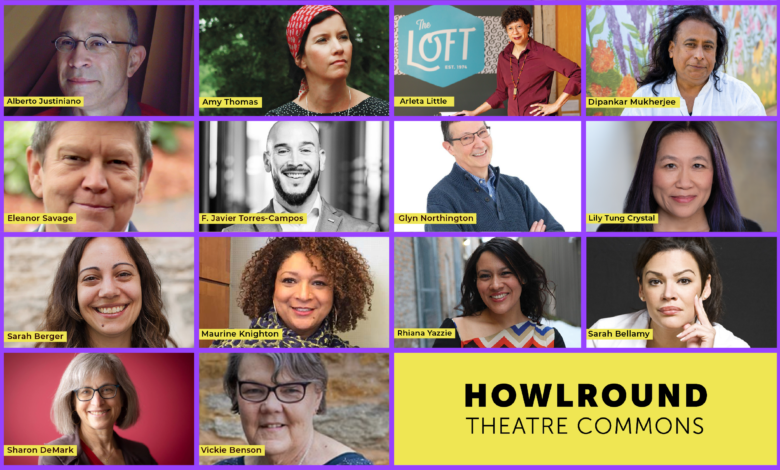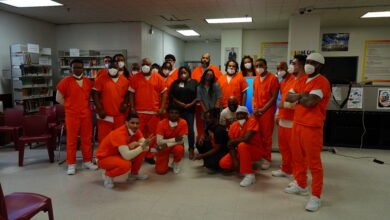Twin Cities Funders and Theatres of Color Are Transforming Relationships, Part Two

This coalition also revealed disappointing yet predictable metrics. Bellamy reflects, “You can look at organizations over a ten-year period. I remember looking at a predominantly white institution (PWI) in the Twin Cities that grew 70 percent, and Penumbra grew one over that same period. One percent. Yeah. Just one little baby percent.” According to Lily Tung Crystal, former artistic director of Theater Mu (now artistic director of East West Players), “Most arts funding, about 95 percent, goes to PWIs.” Even the funding going to TCTOCC as a result of this collaboration constitutes only a small percentage of the $120 million total the REFC funders give per year. For context, the Twin Cities demographics as of 2023 reflect between 26 percent to 33 percent BIPOC communities, with the white population continuing a downward trend.
To address and examine these metrics, among other issues, TCTOCC-REFC committed to meeting as a group quarterly and convened a retreat in 2018. While simple on their surface, the quarterly meetings built upon the organic formation of solidarity between individual organizations of TCTOCC. The theatre leaders came to know one another as individuals and provided mutual support for projects, initiatives, and sometimes protests. For REFC members, who were arriving at this coalition as individuals and not necessarily representatives of their foundations, this engagement effectively took place “off the clock,” drawing a personal investment into the collective goal.
This kind of support sediments over time; even in the non-profit world, wealth begets wealth.
Flipping the Script
One major innovation at this retreat involved funding officers presenting the history of their foundations’ funding rewards and rejections, as well as the resources and possibilities each officer could access and leverage. This presentation “flipped the script” of funding. Generally, arts organizations create elaborate written and presented materials to win support from funders. Creating these materials takes dozens if not hundreds of staff hours, sometimes requiring outside consultants. To prepare, organizations budget at least one fiscal year in advance and justify line items. They must contextualize their mission amongst many other organizations’ missions and provide proof of their fiscal capacities and responsibilities. Each funder requires different kinds of materials with differing nuance and focus. A given organization will need to create dozens of presentations a year to meet funding needs. It is an arduous process.
The “flipped script” presentation exercise not only exposed funding officers to the embodied experience of undergoing such demands, but it also explicitly outlined and supported the intuitive sense that BIPOC organizations are underfunded despite efforts to gain support. Eleanor Savage of the Jerome Foundation gathered funding history for the major white-led and TCTOCC theatres in Minneapolis from the six REFC funders, “The exercise illuminated to both arts leaders and funders the reality that TCTOCC theatres represented only 7.7 percent of the total funding over time. There were TCTOCC theatres who had applied repeatedly and never received funding from the REFC funders.” Presenting the metrics of the actual funding reality for BIPOC organizations revealed the implicit bias and chronic lack of commitment in the funding system.
Foundation funding is sometimes deliberately opaque. “There’s not a lot of legal accountability for foundations,” says F. Javier Torres-Campos, formerly of Surdna Foundation and now an independent consultant. Legal code requires 501(c)(3) arts organizations make financial disclosures available to the public. Arts organizations then must provide lengthy audits of these disclosures in order to apply for funding from governments or foundations. Legal codes do dictate how foundations disburse wealth, but they do not require nearly as much disclosure to the public. While private foundations must spend down 5 percent of their overall investment, with an average recent stock market return of 10 percent per year, some foundations simply build wealth. Additionally, each foundation interprets its mission uniquely depending on changes in leadership, political influence, and trends of the field. These rapidly shifting priorities can feel like a roller coaster ride to arts and other non-profits seeking funding. Considering the immense financial power foundations wield in the entire philanthropic sector, very little public intervention holds foundations accountable.
The Internal Work
This larger context—a known reality to REFC members, but only vaguely known to TCTOCC—required a rethinking of funding strategy. As funding applicants, it is easy to succumb to tunnel vision of what funders need and then simply comply. Understanding how the funding structure works, however, created potential pathways for shifting systemic inequities. “It was clear to us that local funders were committed to doing the internal work. This wasn’t just a one-off opportunity…they were trying to transform their entire institutions,” reflects Torres, speaking about the TCTOCC-REFC coalition.
Many foundations were founded by a family with generational wealth. Well-known foundation families associated with supporting the arts include the Duke, Ford, Mellon, Shubert, and Walton families. For foundations invested in the arts, there is a long history of members of the foundation family serving on boards of arts organizations. These informal connections form valuable social capital. A family member might not participate in the business of a foundation, but they might exert influence on the foundation board of directors or president. Similarly, members of the family might encounter board directors socially at many different arts and political functions. This kind of support sediments over time; even in the non-profit world, wealth begets wealth. The decades-long support that a large organization might receive from a given foundation then garners additional significant funding from other sources that see it as a reliably valuable investment. All major cities have such institutions that serve as marquee cultural centers; they have multimillion-dollar budgets and occupy substantive plots of land while maintaining celebrated buildings that have served the same organization for decades. The funding landscape continues to change, yet these organizations still enjoy a combination of government, private foundation, corporate sponsorship, and major donor support. Most of them are PWIs (more on this phenomenon can be found in “Not Just Money: Equity Issues in Cultural Philantrhopy from Helicon Collaborative and in “Working Against Uncertainty: Working Capital and the Resilliency of BIPOC-Serving Organizations” from SMU DataArts).




